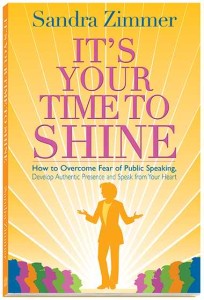
Your book cover can make or break book sales. I recently recommended a book to a student in my book writing class and she said later, “I never would have bought that book without your recommendation. There were so many visually appealing books and this book had neither title or cover to entice me. ”

I was struck by that statement, which reinforced the importance of a book cover. People often ask me what goes into a bestselling book cover and to recommend a cover designer. I’ve seen some mixed results with covers. When Sandra Zimmer recently recommended book cover designer Mark Gelotte, I checked out his websites and covers. Nice. Consistently on.
I asked Mark if I could interview him for Lisa Tener’s Writing Blog. Here’s our interview.
Me: What would you say about how you go about designing a cover? What are the most important questions to ask yourself?

Mark: When it comes to designing a cover, my first steps have nothing to do with visualizing or creating the concept. Rather, I need to know the author and their personality. Who they are is important in the look of their book. 15 years ago, a client told me, “if I don’t feel 100% about my cover, how can I sell it?”I’ve never forgotten that. An author that feels complete about all the aspects of their book, including the cover, will be highly motivated to put it out in the world and market it successfully.
Once I’ve talked with the author,I look at the content of the book to know it’s style and I’ll ask for sample chapters to read. This will give me an idea of the type of readership and thus the style a cover will take to attract that potential buyer. Today, buying books at a bookstore competes with buying books online so the cover must be as compelling on a computer screen as it is on the bookshelf. Plus, I have to consider any design I do in comparison with other similar books. With non-fiction especially, I will research other books in the genre and decide what needs to be done to make it unique and separate from the competition. With fiction, the design is about attracting attention and it tends to be more liberal in style. I find it’s based on the mood of the buyer rather than on specific criteria that non-fiction is.

Having said this, the questions I ask are:
• How is the author’s personality reflected in the design?
• What is the readership for this book?
• What design style is the best solution for this book? (graphic, freeform, illustrative, typographic, photo of author, or a combination)
• What will separate this book’s cover from it’s competition?
Me: What are the three (or 5) biggest mistakes you see in covers?
Mark: 1) Poor text placement. When title wording is spread too far apart, it’s usually an attempt to fill up the cover. The title must be treated as single graphic element, not a string of words. Also, individual letters in a title that are spaced unevenly (kerning) or widely apart are a similar mistake in poor cover design.
2) Overuse of a single font for all text. Using the same font style is a warning sign of a bad cover. A subtle mix of type styles are needed to keep a cover interesting. The most amateurish covers I’ve seen use some form of Arial/Helvetica in every part of the cover text. At the very least, using bold and italic combinations will help the look.
[Editor’s note: This totally surprised me. I thought you shouldn’t vary fonts, but apparently, you should–just subtly]
3) Poorly prepared photos. Since authors will often have a bio photo on their book, a noticeable mistake is using a snapshot instead of a professional portrait. A snapshot photo tends to be grainy, low resolution, or poorly composed. If there is no other alternative, getting the snapshot retouched is necessary. This also applies to using a snapshot photo for the cover design.
4) Overuse of single color or poor color choice. A cover that has a single color background rarely works effectively unless the designer is skilled with the rest of the cover’s elements. Some authors will want to use their favorite color for the background to their own detriment.That favorite color may not look good on a printed cover. It can defeat the sales of the book because it’s not perceived well by the audience or it overshadows the meaning of the book.
5) The cover design is disconnected from the chapter formatting. A professionally done design will have a continuity throughout the entire book. To achieve this, a ‘bridge’ of fonts and layout needs to be made to connect the cover with the inside of the book. It’s a simple step to match a chapters font styles to the cover font and yet many self-published books miss this step.
Me: What are the most important things to make it look professional? What do you need to know about Fonts? Placement of title, author, etc.

Mark: Paying attention to the 5 biggest mistakes and avoiding them will help a book look more professional. For the author that wishes to do their own design, I highly recommend researching established books and noticing how they are designed. Look at colors, use of fonts, balance of the layout, and how all parts of a cover are simply elements that have been placed in relation to each other. For example, a title can be as effective at the top, middle or bottom of the page with the author and subtitle strategically placed around it.
The cover design is not limited to the front either. All printers consider cover artwork as a single piece of art that contains the Cover, Spine, and Back Cover. Whatever is created for the cover extends to these other parts. Use the same style and fonts for the spine and back.
As for typefaces, readability of long text passages is best with serif fonts (Times, Palatino, Garamond, etc.) Short text passages can be either serif or sanserif (Arial/Helvetica, Futura, etc.) Titles can be any font that is readable from a distance. Be aware that the colors used on type must have enough contrast with its background to stand out. Stand away from the design as if you are in a bookstore and make sure the title is readable or catches your attention.
Going beyond looking professional, carefully consider the wording used on the back cover. This is where you will sell the book and yourself to the audience. Good book design goes hand-in-hand with an effective marketing description of your book and this is especially true of non-fiction. While design plays the part of grabbing the buyer, what is said on the cover/back cover will actually sell it.
Me: What are the three biggest selling secrets for a good cover or what are 3 things you can do that makes a cover say, “Pick me up.”
Mark: 1) Use a dynamic font and a placement that matches the tone of your book. Balance this text placement in a way that the eye follows a natural progression rather than skipping all over the page. Treat the type as a design element.
2) Create an intriguing graphic, photo or illustration to attract the buyer to pick up the book. If there is no image, let the title be arranged in a way that it becomes the source of interest. Highlight key words in the title by color, size, or position.
3) Consider very carefully what you are saying with your title and subhead and emphasize this in your design. Bring this message to the back cover and embellish it. Remember that a good book cover not only sets the ‘tone’ of the book, it ‘markets’ the book much like an advertisement.
Me: What was the worst cover you’ve ever seen (you don’t need to name the book but maybe the errors)?
Mark: The worst cover I’ve seen was about 10 years ago. The author either designed the book themselves or had a relative who had some minor art experience; I don’t recall which it was. But having an art background didn’t translate well to cover design. The cover failed with the type choice and had the crudest of illustrations. It was a combination of being extremely amateurish and flat looking with a solid color background. I can say that the 5 biggest mistakes mentioned earlier were all present in this book. The truly sad part was this author had several boxes of his book sitting in his garage because they didn’t sell.
Me: What are some of your favorite covers you designed and why?
Mark: My favorite books are the ones that combine all my skills as a designer, illustrator, and typesetter. I’ve made the books a complete continuity of design and text. Naturally, the latest books I’ve finished tend to be my favorites:
Enlightened Charity

For a historical and deeply researched biography, the cover for Enlightened Charity was suggested by the author to show its subject, Sister Matilda Coskery. She lived in the early 19th century; thus, no photographs exist of her so I had to compile other images from that period and construct a montage of her persona. I applied a lithograph effect to give it a feel of the printing from that period. The fonts were suggestive of the times yet modern enough to attract the reader. I also typeset/formatted it’s 500+ pages with added photos and charts.
 The Creator Speaks
The Creator Speaks
This new age book is an esoteric journey into the creation of the Universe and evolution of humanity. Because of the subject, the cover had to fully express the complexity of what was written without becoming trite or confusing. The potential readership of this genre was heavily considered as well as the author’s suggestions. Since I am also a painter, I decided to illustrate the cover as a painting and then add the title and type arrangement afterwards. Colors were chosen to appeal to a new age readership.
It’s Your Time to Shine

This cover had to express a confidence in public speaking for those who have stage fright. Note how the title pyramids downward to the byline beneath it, ending with the illustration of speaker and audience. The eye follows a natural flow. Because the illustration is made up of silhouettes, it became more of a design pattern to emphasize the mood. The color choices of the book are lively and meant to keep the subject matter in a light vein. I also added a number of illustrations to the inside showing various breathing techniques.
I’ve asked Mark to check back here over the next week or so to respond to your book cover questions. This is your opportunity to hear from a book cover design expert. Ask away! And share your favorite book covers.
Author’s Note: Bloggers are now required to let readers know if they are receiving compensation for mentions in their blog. Neither Mark nor Sandra are compensating me for these mentions–I have interviewed Mark to illuminate subjects that will inform and be of value to you.



fascinating. visual appeal is so powerful.
Lisa and Mark – Wow! Thanks for generously sharing your expertise with so many of us at this stage of bringing our books to the world. Really valued the direction to consider the whole of the “cover” — front, spine and back. Very appealing examples – thanks again!
Great information, Mark- thanks for sharing! I especially appreciated the comments about tying the cover to the inside look of the book, too. Wonder if you could share if there are book cover colors that appeal to women vs men? Also, would you ever recommend using multiple images on a cover front as opposed to just one photo image?
Monica, your question about book cover colors that appeal to women vs. men is excellent. In fact, my clients are 70% women and this question does come up during the design process.
First, I would like to emphasize that colors are only one aspect of appeal. Images and styles also play a big part in attraction. But what I find is that a balance of several “sub” colors will enhance the overall color. I will place these lesser colors in type, images or graphic elements. The book “It’s Your Time To Shine” (above) is a perfect example of this. Notice how the overall color is yellow-orange but I placed blue in both bottom corners and in the authors name at the top. Normally blue can clash with yellow (and tends to be a more masculine color) but with this placement it actually brings out the warmth and helps give some weight to the cover. The other color I used is a Magenta in the title but since it’s a warm color it can be used boldly.
In a very general sense, warm colors are more feminine (yellows, oranges, and medium reds). But aqua, lime greens and purples are also appealing since they are warmer versions of cool colors. The cool colors (blues and greens) along with sharp contrasts (black and white) will tend toward masculine. Red is a dramatic color that can go either way and I use it for emphasis. Neutral colors (tan, brown, gray, autumn shades) will work with everyone.
As I said, these are generalizations about men and women and what book colors will attract them. For an author writing to a broad audience, use a combination of cool and warm colors.
“Also, would you ever recommend using multiple images on a cover front as opposed to just one photo image?”
My rule of thumb on this is to have one dominant image and then add lesser images. A book cover still needs a centralized focus to initially attract the reader. After that, the freedom is there to add whatever you want.
A DVD cover I designed using many photo images but with one dominant photo is under the cover title, “The Incredible Possibility of Life.” It is at this link, on the right:
http://maeric.com/assets/billf-sm.jpg
Mark, thanks for these thorough and informative answers. I find the gender/color information especially intriguing.
Thanks for this blog. I got it from the FB. In my computers the pictures didnt want to open! I was very sory about that because I really wanted the art too.
But however thanks a lot. It has helped me.
Great article – it’s so in-depth while still being a good primer for beginners. I especially agree with your question about readership – the target audience and their preferences is such an important consideration in any graphic or marketing design.
I have a question as well – what do you recommend if a book has a very long title (10 words or more)? I’ve noticed that many of the most eye-catching covers have short titles. What’s your approach in that sort of case?
“I have a question as well – what do you recommend if a book has a very long title (10 words or more)?”
Erin, this is an interesting challenge for a designer. You are right that most book covers have a short title with possibly a subtitle to fill in the rest of the subject. But what a very long title does is make IT the focus of the book rather than any graphic or photo.
What I would do in this case is either exaggerate the fonts in the title or I would string the words out in some unusual formation. It could be quite effective and eye-catching. Basically it’s taking what might seem a liability and turning it into a strength.
From a marketing standpoint for a non-fiction book, certain key words of the long title can be emphasized by color or size or font choice. Since nonfiction covers need to describe the subject matter to the potential buyer, this would be a good approach.
Thanks, Mark, for your thoughtful response!
Last night, I received a call from a former client who read this article. The question he asked was about an author self-designing their own cover and what design software to use. I thought I’d add my answer here in the comments.
With Print-On-Demand book publishers like BookSurge, Lightning Source, Lulu, iUniverse, etc., they all require one type of format; a PDF. A CMYK PDF file is standard in the industry so the design software to use will be one that outputs the artwork to a PDF. As I mentioned in the article, a printer sees a cover file as the front, spine and back of the book, so the design software needs to be able to handle a wide measurement along with type fonts, images, and arranging of these elements.
I use a variety of professional software: Adobe InDesign, QuarkXPress, Photoshop, FreeHand and Illustrator. I’ve been able to use simpler programs on a Mac, like Apple Pages (part of iWork) and Swift Publisher but these can be limiting for any involved design. Since I don’t design on a PC, Microsoft Publisher would likely be limiting as well. However, for a PC user and a Mac user, consider designing a cover with one of the professional publishing applications I mentioned or with Photoshop, as it has flexibility, a range of effects, and type control. And it outputs to a CMYK PDF.
Beware of using Photoshop Elements however as it will not create a CMYK PDF file used by publishers. CMYK is based on the 4-basic inks used on presses to create full color covers. Photoshop Elements will only output to RGB colors, which are used on the web, computer screens and inkjet printers. Unless you have a way to convert your design from RGB to CMYK, ask your POD printer(s) before using PS Elements.
You will find templates and size requirements on all the Print-On-Demand publishing sites that will help immensely with the cover. Most of these websites have a spine calculator which will consider the number of pages in your book along with the thickness of the paper used in order to create an accurate dimension for your cover PDF.
As a book designer, I know what it takes for authors to have a beautiful and marketable cover. But, I also realize that there are valid reasons authors choose to take the design into their own hands, whether it’s economic reasons or personal fulfillment. I’ve worked with authors purely as an hourly consultant on their cover artwork and often that blend will reap excellent results. With that in mind, if you choose to design and produce your own book cover, I highly recommend reviewing it with a graphic designer in your area before sending it off to be published. Better to be “safe than sorry” in the end.
— Mark
Mark, I am writing a book about 18 women that I know well. Are pictures ever appropriate if I am not going to use the names of the women?
“Mark, I am writing a book about 18 women that I know well. Are pictures ever appropriate if I am not going to use the names of the women?” — Elaine
Before anything, I would get their signed approval to anonymously post their photos on the cover. This is a critical step for your protection and theirs. (Perhaps Lisa has some suggestions about books and signed permission contracts.)
If all parties agree on this, by all means, using their photos would be a nice touch. It would add personality to the design. Graphically, I would retouch the photos to get them all into consistent color tones and focus so they look good together and one doesn’t stand out any more than the rest. And because you have 18 portraits, it’s likely that these photos will become a background, collage, or border element. Let your book title dominate, allowing the reader to focus on the portraits secondly.
Thank you for the really helpful article! My question is, is it considered unprofessional to sign my first name (very small) on original art that I’ve created for a client’s cover? Many thanks!
A great question, Anna. Normally, the publisher (or author if self published) includes information on cover design on the back of the title page where they have copyright information (“cover design by” plus your website link) but not on the cover.
Great article and I really like the comments with regards to the DIY approach. Many authors who embark on designing a cover come unstuck when trying to create a cover which needs to be in CMYK and with the fonts embedded too.
There can also be issue of certain Fonts which are used, sometimes these are not only poorly used but can also be included without regard to their license.
A great article, thanks
Josh @ http://www.jdandj.com
I like your article and my question is regarding colour. I am currently designing my lastest book cover and having thought about the colour of the font. The book is about the history and features of a public garden. The image for the cover is a painting of an a long avenue of trees, colours are manly green and with some yellow tones. I tried using white front but does not seem to stand out. I was wondering using a colour opposite to green, eg red font? Do you think red font would work ok or is it too strong colour. I could send you a sample of the cover for your thoughts?
Roger, it is difficult to advise using Red text with the Green painting without seeing it in context. Generally, this doesn’t seem to be a good combination for text but that is up to the arrangement and tones of the two colors. It can work if treated artistically.
Look online at similar covers, ads, banners, etc. that use these colors and see if it fits your book. —Mark
Roger, I would add to Mark’s comment that this is why it’s so helpful to have a professional of Mark’s caliber to design a cover. A cover truly “sells” a book and helps a reader say, “Wow, I want to read that” Or “Wow, what’s this about?” So it’s one of the places that’s worth investing in if you can.
Good morning from Denver, Colorado
My book is very close to being published. I already have a contract through Balboa Press, and the editing is being wrapped up shortly. My main question is this, should whomever (or whoever, I suck at this rule) I hire to do a cover, also read the book? It’s only about 30-32,000 words, so it wouldn’t take long anyway. I’m a decent artist, but this doesn’t mean I know graphic appeal. Everything I try looks a bit too rigid or academic. Thank you kindly for your attention, and the opportunity to seek proper counsel.
Yes, they should at least skim it. But it would also be good for you to give them some guidance as to colors or images or show them images of book covers you love. Feel free to email me if you want a referral.
Hi Daniel, I am reading your post from 2 months ago. You may have already printed your book through Balboa by this time. If so, I hope it went well and my comment can be for other authors in the same situation.
Balboa is rather strict when using designers outside of their company. They have tight rules and want to make sure an outside designer is a professional who understands their system and printing limitations.
I have worked with Balboa on several occasions (through my author/client’s) and it went smooth with few revisions. The covers turned out colorful and sharp.
I was less impressed with the pages where the paper was thin and the artwork and text bled through to the other side but that is another matter. I hope this bit of advice helps. —Mark
In this article, you have effectively explained the importance of having a good book cover that easily sells. I am planning to write my own book and I will definitely follow the tips provided by you in this article to design a good book cover which sells. Thank you.